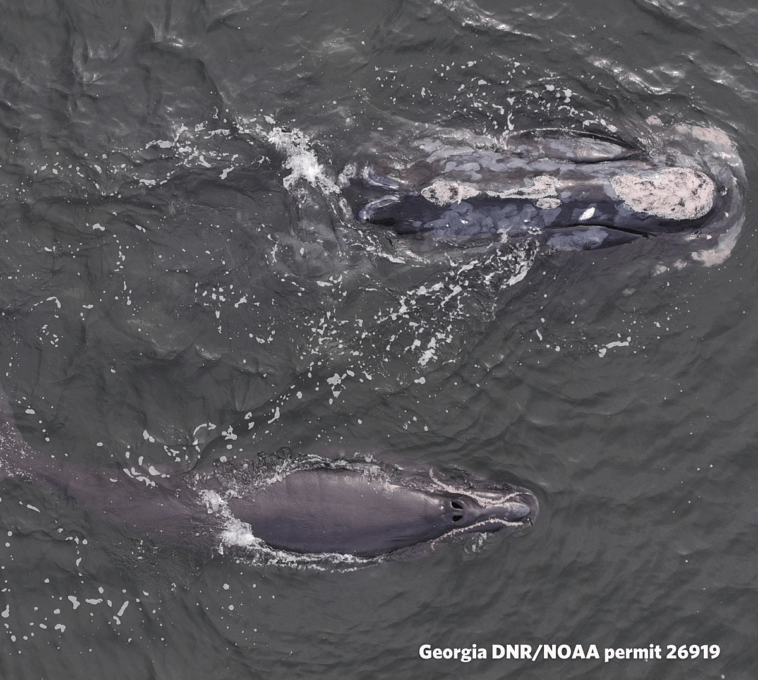Maybe it’s not good math but Minus 1 just made a plus one.
In an update to the North Atlantic right whale calving season, right whale catalog No. 2430 — nicknamed Minus 1 — was seen with a calf Dec. 9.
That initial sighting, reported by a U.S. Navy vessel, was followed by the Clearwater Marine Aquarium Research Institute plane survey team relocating the pair later that day about five miles east of Amelia Island, Fla. A DNR boat crew videoed the mom and calf but did not try to collect biopsy samples of either because the calf was too young.
Calf with mom Minus 1 and dolphins off Amelia Island, Fla. (DNR/NOAA permit 26919)
In the drone video above, note that the calf remains at or just below the surface and the mom stays near (mostly underneath the calf ). This close-contact behavior is typical for a mother and her young calf and one of the key reasons why coastal boaters are urged to go slow and keep watch during the winter calving season — for their safety and the whales. (For more, see “Where’s the Whale”.)
You can also glimpse the calf’s fetal folds. Those horizontal impressions, or creases, on its body reveal that it’s still a neonate. The folds will disappear as the calf ages (details in “Big Babies“).
This calf marks either the second or third documented this season along the Southeastern coast, the only known calving grounds for imperiled North Atlantic right whales.
As for Minus 1, she’s at least 31 years old, this is her fourth known calf and she had last been seen with per previous calf off the Georgia/north Florida coast in 2021.
According to the New England Aquarium’s North Atlantic Right Whale Catalog, the nickname for Minus 1 came from callosity scars on her head that look like, well, – 1 — although those scars may be less visible now.
Oh, and we take back that quip about bad math.
Adding a healthy calf to the thin ranks of right whales is always good.
DNR boat monitors mom and calf from a distance Dec. 9 (DNR/NOAA permit 26919)
Top photo: Minus 1 and calf on Dec. 9, 2024 (DNR/NOAA permit 26919)
(Video or images of right whales used by media or other outlets must include the following: Taken by Georgia DNR under NOAA permit 26919. It is illegal to approach right whales in U.S. waters without a research permit. Other vessels, aircraft and drones must maintain a distance of at least 500 yards from these endangered whales. Researchers shown have the training and permits required to approach right whales safely and legally.)




GIPHY App Key not set. Please check settings